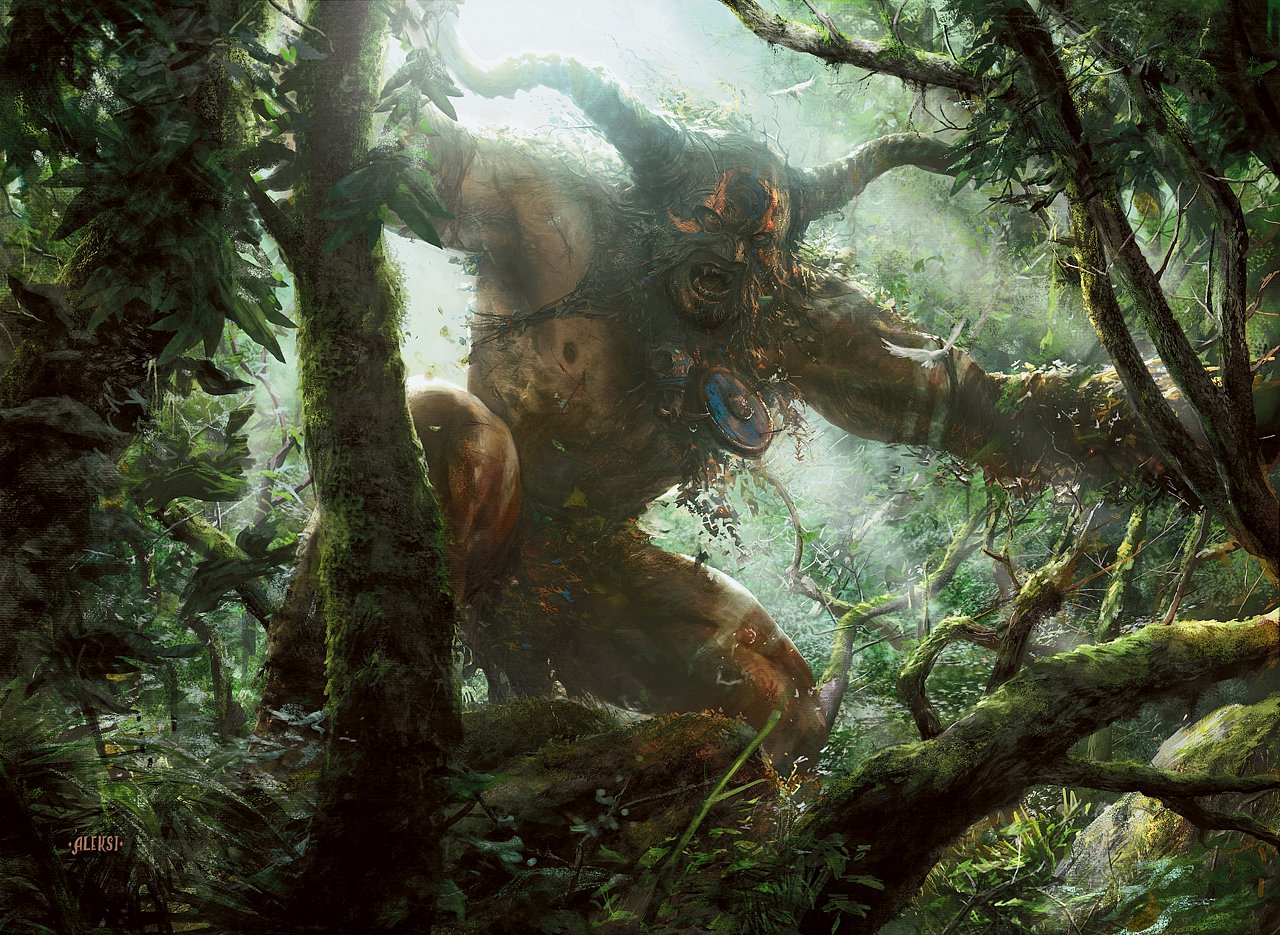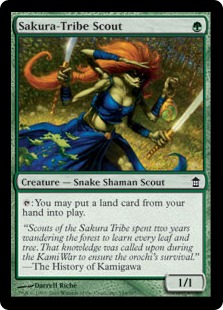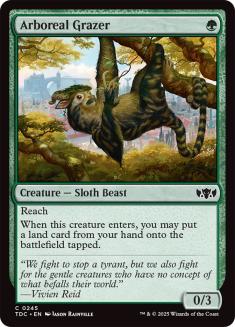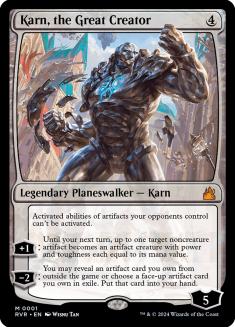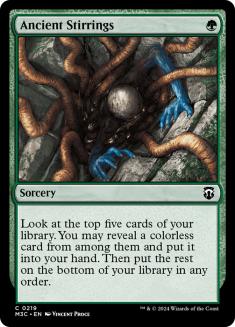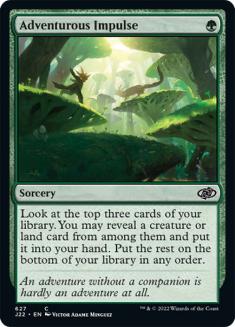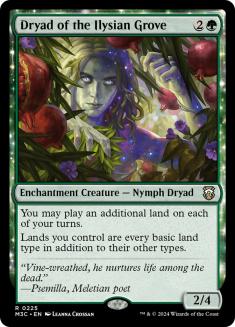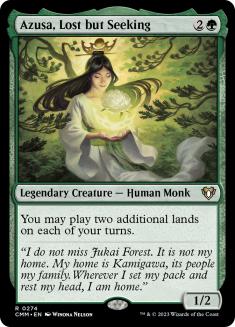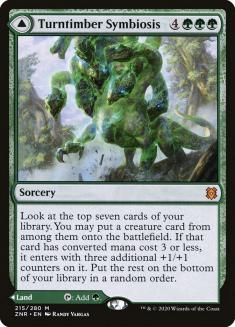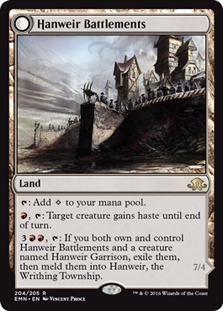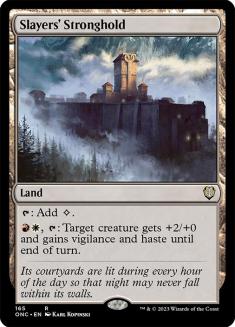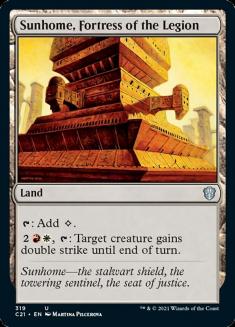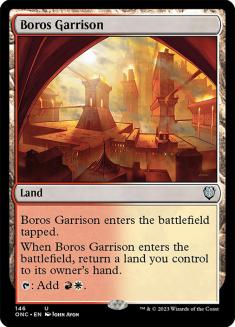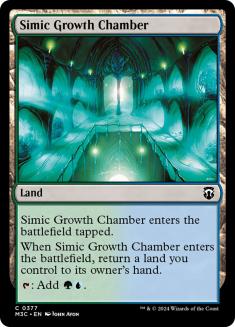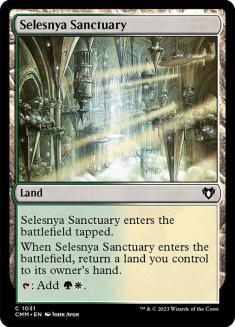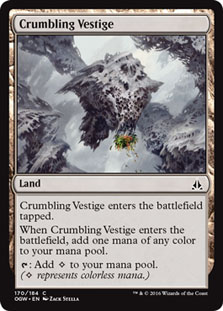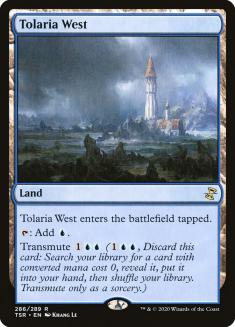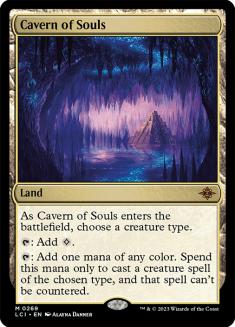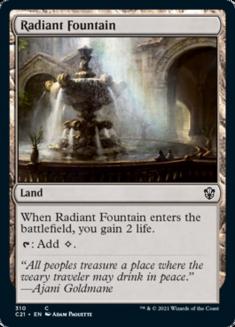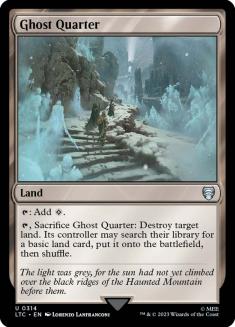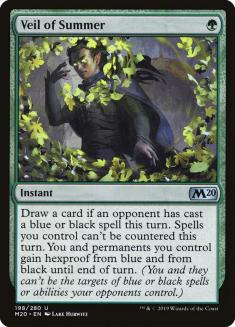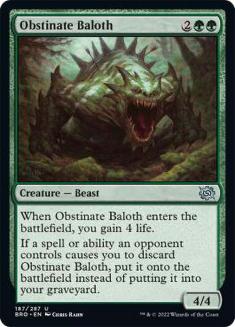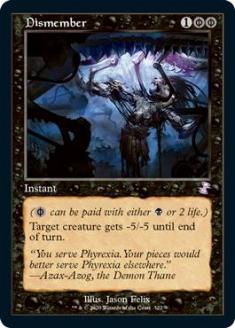Amulet Titan has lived a long and varied life. When Summer Bloom squared off against Splinter Twin, the deck was on top of the world — after both were banned, it languished in obscurity for years. As Krark-Clan Ironworks and Arclight Phoenix made a name for themselves, there was a deck that some geniuses and Canadians were boldly claiming had #nobadmatchups. A year later, that was actually true and the early results in 2020 proved it; now, after another tumultuous period for Modern, Amulet Titan is trying to regain its relevance.
After feeling lost in Modern since the pandemic started, I wanted an excuse to order some beautiful, old-border Primeval Titans. This first batch of post-ban results has me hopeful:
Creatures (13)
Lands (32)
- 3 Forest
- 1 Wooded Foothills
- 1 Boros Garrison
- 1 Golgari Rot Farm
- 2 Selesnya Sanctuary
- 1 Sunhome, Fortress of the Legion
- 1 Gruul Turf
- 1 Breeding Pool
- 1 Ghost Quarter
- 4 Simic Growth Chamber
- 1 Vesuva
- 3 Tolaria West
- 1 Misty Rainforest
- 2 Valakut, the Molten Pinnacle
- 1 Bojuka Bog
- 1 Khalni Garden
- 1 Slayers' Stronghold
- 1 Cavern of Souls
- 1 Radiant Fountain
- 1 Crumbling Vestige
- 3 Castle Garenbrig
Spells (15)

Creatures (13)
Lands (32)
- 2 Forest
- 1 Wooded Foothills
- 1 Snow-Covered Forest
- 1 Boros Garrison
- 1 Golgari Rot Farm
- 2 Selesnya Sanctuary
- 1 Sunhome, Fortress of the Legion
- 1 Gruul Turf
- 1 Breeding Pool
- 1 Ghost Quarter
- 4 Simic Growth Chamber
- 1 Vesuva
- 3 Tolaria West
- 1 Misty Rainforest
- 2 Valakut, the Molten Pinnacle
- 1 Bojuka Bog
- 1 Khalni Garden
- 1 Slayers' Stronghold
- 1 Cavern of Souls
- 1 Radiant Fountain
- 1 Crumbling Vestige
- 3 Castle Garenbrig
Spells (15)

Deckbuilding decisions with Amulet Titan are either hard choices or no choice at all — beyond a sacred core, there’s stiff competition for each slot and role in the deck and these choices play into one another. A key strength of Amulet Titan is the flexibility of its multiple toolboxes via Summoner’s Pact, Primeval Titan, and Tolaria West ensuring you have consistent access to singletons — adding or removing just one copy of a card has serious implications.
I consider these spells untouchable:
- 4 Amulet of Vigor
- 4 Summoner’s Pact
- 4 Primeval Titan
- 4 Dryad of the Ilysian Grove
- 1 Azusa, Lost but Seeking
These cards should never leave your 75. Other than the familiar tactic of cutting Amulet of Vigor against highly interactive decks — less convincing now as those decks are more capable of taking over the game quickly and a naked Primeval Titan doesn’t end the game by itself reliably without Field of the Dead — they should never leave your 60 either.
Some players like to shave a Summoner’s Pact against decks with Chalice of the Void but this is a severe mistake. Amulet Titan’s fail rate is largely made up of draws that lack its titular threat and you need to maximize your threat density for non-Chalice games. Eldrazi Tron in particular has Thought-Knot Seer, which demands threat redundancy and shortens your window to find a backup Titan, and fast starts with Karn, the Great Creator or Reality Smasher where Summoner’s Pact’s dual role as threat or ramp spell (with Amulet of Vigor) is crucial for racing them. If this is the one lesson you learn from the article and you get paired against Eldrazi Tron, this effort will be worth it and your Premium membership will have paid for itself.
That’s the easy part!
The sectarian feud between Scout sympathizers and Grazer partisans has raged since the release of War of the Spark. As someone who once registered Wayward Swordtooth and Coalition Relic to avoid playing Scout, my conversion to the Sakura Tribe was recent and hesitant. Both cards have unique strengths that make this a real debate:
Sakura-Tribe Scout
- Scout can jump to the crucial breakpoint of Turn 4 Primeval Titan (or Turn 3 with Castle Garenbrig) without any other ramp — especially useful if you mulligan and have a redundant ramp spell but can’t afford to send back lands or threats.
- Scout’s ability lets you protect another land with a bounceland or trigger Bojuka Bog and Valakut, the Molten Pinnacle at instant speed (or set up an ambush with Ghost Quarter).
- Scout lets you ‘replay’ a land several times in a turn with bouncelands, padding your life total with Radiant Fountain, creating blockers with Khalni Garden, activating a land like Hanweir Battlements or Slayers’ Stronghold multiple times, or adding specific mana colours with bouncelands and Amulet of Vigor.
- With Amulet of Vigor and a bounceland, Scout represents a Turn 3 Titan, while Grazer needs more help.
- Scout has more utility throughout a game, whereas Grazer does one thing at a specific moment.
Arboreal Grazer
- Grazer lets you cast a three-drop on Turn 2 without needing three untapped lands (and you only need one if you have a green bounceland), which gives you a different subset of Turn 3 Titan hands without Amulet – optimizing these non-Amulet draws is crucial.
- Grazer offers guaranteed ramp without needing a fragile creature to survive the turn and doesn’t make otherwise weak removal like Fatal Push or Lava Dart relevant.
- As an 0/3, Grazer is an ideal blocker against one-drops from Burn or Izzet Prowess or two-power attackers from Death & Taxes. Reach is vital against threats that can fly over a Primeval Titan – namely Sprite Dragon, Stormwing Entity, and Ornithopter or Inkmoth Nexus from Orzhov Hammer (Lurrus) – and is cheap enough that Primeval Titan into Arboreal Grazer (including off Summoner’s Pact) can stabilize an otherwise lethal battlefield.
- Grazer’s immediate effect helps it fulfil its role past the early turns as the opponent is more likely to have a clean window to kill a Scout drawn later. In a deck with relatively few green sources that can cast either on Turn 1, this comes up more than you’d like.
Arboreal Grazer can also turn Summoner’s Pact into a ramp spell (Sloth Spirit Guide?) for Amulet of Vigor. Azusa, Lost but Seeking can also do this (you spend three mana for two land drops, which gives you four mana back) but is then exposed to removal and occasionally you’ll have Azusa already — losing the first Azusa to the legend rule resets the land count to stop the second copy being useful, so you’d need a Grazer. This, as well as Grazer’s utility as a Pact-able emergency blocker, makes me think a list that commits to Sakura-Tribe Scout should still have at least one Arboreal Grazer maindeck.
A common argument for Sakura-Tribe Scout is that, if Arboreal Grazer is only better against aggressive decks like Burn and Prowess, you should run the card that’s stronger across the board (or, as Will Pulliam suggested, sideboard Arboreal Grazer so you can upgrade your Scouts there and keep the same density of ramp effects). I agree with that in principle but increasingly I find Grazer more reliable in general — and not just because I run into a lot of Lava Darts.
There’s a more abstract reason to doubt the Scout. Amulet Titan has the most moving parts of any combo deck in Modern — you have a clearly defined goal of resolving Primeval Titan but a lot of flexibility as to how you get there. You need some ramp between Amulet of Vigor and the extra land drop effects — and have enough copies in total that you usually have at least one — but these all rely on having enough lands or the right lands to do anything. As a result, most opening hands are somewhat speculative (at least one piece will be missing). Evaluating hands is already difficult in this context and requires weighing up how much time you’ll have to find the piece(s) and what odds are acceptable there. Scout being so polarized in its effectiveness makes this task even harder — a hand that’s great if Scout lives can collapse if it dies and the value of even a Turn 2 Scout can be unclear. Grazer’s predictability can be more important than any of either card’s niche applications.
Count this as a cautious endorsement of Grazer, but don’t trust anyone who sounds too overconfident in their choice here.
Another big divide concerns Karn, the Great Creator. Karn was at its most important against the combo decks cut out of Modern by the last round of bans — its static ability was enough to cripple Goblin Charbelcher and Ad Nauseam, and fetching Tormod’s Crypt or Pithing Needle could lock out the likes of Oops All Spells. Most of the remaining combo decks are either good matchups like Dredge or creature combo decks like Selesnya Company that can attack Karn easily and aren’t as weak to a single silver bullet. Karn can be downright embarrassing against the aggressive decks that act as a gatekeeper in Modern.
Despite its poorer positioning, Karn has various situational and structural benefits in Amulet Titan. It dodges targeted hate like Aether Gust or Ashiok, Dream Render and is a colourless threat that can be cast under Blood Moon to find an answer or another threat. It increases your threat density — always a looming issue against interactive decks and more important when the first Primeval Titan ends the game less reliably now — and lets you keep ramp-heavy hands in the expectation of finding a payoff.
Amulet Titan is prone to mopey starts that can’t make a meaningful play until a Turn 4 Primeval Titan that’s often too slow. As a four-mana threat, Karn makes it much more likely that you have a high-impact play on Turn 3 with the help of a single Amulet, Explore, or one-drop ramp creature. Karn’s relative strength against linear decks covers your bases well, as these matchups are where these slow Titan draws are at their weakest.
Karn comes at the cost of sideboard space but this real estate is less valuable for Amulet Titan as the core of your deck is large and must remain mostly intact. Additionally, the decrease in linear decks reduces the need for more specific answers that you would use those slots on instead. A format where the non-aggressive decks are slower gives Karn more room to flourish.
The Karn debate ties into the previous question: Arboreal Grazer is better at defending Karn and covering for its weakness against aggro, while Sakura-Tribe Scout can get you enough mana to cast a Karn tool like Pithing Needle or Liquimetal Coating on the same turn.
Most Amulet Titan enthusiasts have moved away from Karn for now, but don’t be surprised to see it make a return. Here’s my starting point for Amulet Titan with Karn:
Creatures (13)
Planeswalkers (3)
Lands (30)
Spells (14)

Remember when we all agreed Ancient Stirrings was on borrowed time? Amulet Titan was a part of that argument but only as a postscript — Stirrings was mediocre in the deck, as it couldn’t find a direct threat or non-Amulet ramp (one reason I added Coalition Relic to my winning list from SCG Worcester).
Karn, the Great Creator addresses the first issue and now goes hand in hand with Stirrings — you often see Karn with Stirrings and never see Stirrings without Karn. Finding Amulet alone might seem like a good enough reason but the deck is less reliant on its namesake than people assume — “the deck’s called Amulet” was a common joke among Amulet grinders in response to players sideboarding in narrow artifact hate — and the broken starts it fueled relied on having Amulet on exactly Turn 1.
Stirrings works well with Sakura-Tribe Scout, as it ensures a flow of land drops to keep Scout effective over several turns and Stirrings finding Amulet of Vigor allows a Turn 1 Scout to produce a Turn 3 Titan, while Grazer needs more help.
A way to make up the numbers in much older lists, Adventurous Impulse gained renewed attention in the list that won the Modern Challenge. Let’s check in with its original proponent:
We really were spoiled by Once Upon a Time…
Previously much-maligned, Explore has established itself as a staple of recent Amulet lists as players start to appreciate its subtle power. Amulet Titan cares strongly about card quality but also conditionally about card quantity — it’s easy to run out of extra land drops even with bouncelands cheating that count. The first Sakura-Tribe Scout or Dryad of the Ilysian Grove is excellent; the second has severe diminishing returns. Explore is a card-neutral version of a key effect that offers a redraw to whatever piece you’re missing. It’s not as flashy as its colleagues but it’s a workhorse.
Explore improves further in sideboard games, which tend to be slower and involve more interaction on either side, making card flow more important relative to raw speed. It’s no surprise that Explore is often the best ramp spell against decks like Jund Midrange or Azorius Control.
With fewer slots for ramp creatures and four of those earmarked for Dryad of the Ilysian Grove, Azusa has to hit the bench. That’s no statement on her quality — Azusa is often the best ramp creature despite losing one unique selling point in enabling Field of the Dead. Building on Pulliam’s plan of sideboarding Arboreal Grazer, I think there’s merit to having a sideboard Azusa to be able to optimize your ramp suite for speed.
It’s hard to overstate how important Dryad of the Ilysian Grove is to Amulet Titan. A good heuristic for assessing a matchup is, “How likely is a fast-ish Titan to win the game without Amulet”? Dryad letting Primeval Titan cosplay as a much more handsome Inferno Titan makes those answers palatable against anyone contesting the battlefield, especially without Field of the Dead to let Primeval Titan beat Grave Titan at its own game. Leaning harder into Dryad may be a viable route — my first lists with Theros Beyond Death played the full four Valakut and I always wish I could revisit that. As we’ll see, competition for land slots is so fierce that this may be a pipe dream.
The Zendikar Rising modal DFCs made a much louder impact on Modern elsewhere, but Turntimber Symbiosis was a quietly exciting pickup for Amulet as a tertiary threat and a land drop in a single slot. Parking Turntimber, Serpentine Wood on the battlefield allows any bounceland to represent a possible Titan in the late-game (and can be done consciously to protect it from Thoughtseize).
Symbiosis is a safe and strong inclusion in some number, even if it isn’t the automatic four-of many of us assumed when it was previewed. Don’t cut too far into your other untapped green sources for Symbiosis — losing three life on Turn 1 and then maybe again if you have to replay it is a death sentence against much of the format.
The Amulet Titan manabase isn’t an afterthought that just casts your spells — it’s the centerpiece of the entire deck. There are tough calls here too:
Without the safety valve of flooding the battlefield with Zombies, Primeval Titan has to finish the job itself more often — if it can’t set up a convoluted Valakut kill — and the classic duo of Slayers’ Stronghold and Sunhome, Fortress of the Legion is essential here. Hanweir Battlements was easier to activate without Amulet of Vigor and didn’t require finding a bounceland, putting you closer to the land threshold for Valakut, the Molten Pinnacle (and formerly Field of the Dead), but its main benefit was being low-maintenance. The Boros lands take up an extra precious slot and force you to play the worst Boros land of all:
Boros Garrison is a horrific downgrade to a green bounceland, choking off the explosive potential of your fast Amulet draws by limiting your access to green mana. It’s not as simple as turning your final bounceland into a Boros Garrison — it’s not a functional replacement in many situations. One of Karn, the Great Creator’s saving graces is that it doesn’t care what colours are used to cast it. Primeval Titan is more demanding.
On that note, the worst and most common mistake you can make in deck construction is cheating on your bounceland count. Amulet of Vigor isn’t a strong card by itself — it’s broken when it turns a bounceland into the best Ancient Tomb of all time. Your extra land effects aren’t free — they’re a waste of time and cards unless you have land drops to pair with them. The built-in card advantage of bouncelands is what lets you recover from mulligans, build towards a manual Primeval Titan, and meet grindy decks on their terms.
The core engine of the deck requires a bounceland to fire on all cylinders and any Amulet Titan player will have memories of keeping a hand or finding themselves in a situation where all that matters is topdecking that bounceland. At any given time I’m much closer to playing the tenth bounceland than I am to cutting the ninth (especially with Boros Garrison not pulling its weight) — for comparison, even when I was playing four copies each of Ancient Stirrings and Once Upon a Time, I think it was a mistake in retrospect to only play eight bouncelands.
Maybe this means you have to make a painful cut elsewhere. Do it anyway!
I believe Crumbling Vestige is the most underrated and underplayed land in Amulet Titan and I’ve put my money where my mouth is there. Any ‘optional’ land now has to compete with Forests to enable Castle Garenbrig, so the bar is higher, but I think Vestige clears it comfortably. Vestige is excellent with Amulet, jumping you up to three mana on Turn 2 for Dryad or Azusa without a bounceland and giving you even more options on your Titan turns, but just having a copy in the deck bails you out of situations where you don’t have Amulet and need the help (allowing you to follow up Titan with Arboreal Grazer or Dismember on the same turn, for example).
In Amulet Titan’s 2019 heyday, Tolaria West was a key element of the deck — it brought its own mini-toolbox with Engineered Explosives and Pact of Negation and set up the Summoner’s Pact chains that ensured you would have the last threat and the last laugh. As competition for both land and spell slots intensified, Tolaria West became just a supporting actor. Once Upon a Time or other threats like Karn meant that Tolaria West’s redundancy was less crucial and the Titan chains were less necessary as you could trust the first Titan to lock up the game with Field of the Dead or Valakut, the Molten Pinnacle. With more room to fill, Tolaria West can audition for a bigger role.
Cutting Pact of Negation used to be unthinkable but these days you tend to see it in the sideboard if you see it at all. It was necessary against the combo decks that Karn, the Great Creator also tried to prey on as well as other big mana decks that aren’t popular right now. The introduction of Teferi, Time Raveler made Pact of Negation much worse at forcing through your threat against control decks or answering theirs. Similarly, the strategies that Engineered Explosives is best against in 2021 don’t give you the time to transmute for it.
Where you place your utility lands should be responsive to where the format is moving. Cavern of Souls and Radiant Fountain have a spot for life in the maindeck but Ghost Quarter and Bojuka Bog often sneak into sideboards instead if the pilot believes they can get away with it.
Amulet Titan players can enjoy the under-used tactic of sideboarding lands – the structure of the deck requires a high land count and you can only ever shave a few spells, so upgrading your bad lands into great lands is a wise use of slots. For example, against Burn I’d like a cheap Summoner’s Pact target like Obstinate Baloth but I can’t play too many of these and increasing my odds of drawing a Radiant Fountain naturally yields higher returns. Against control, a second Cavern of Souls means I can be more proactive and frees up Tolaria West to find the Pact of Negation I brought in if I suspect Aether Gust.
The Uro, Titan of Nature’s Wrath decks were popular and scary enough to require narrow responses — Boil was a super-weapon against Mystic Sanctuary, but that blight has been lifted and control manabases display a refreshing diversity now. Veil of Summer saw surprisingly little play as the blue decks’ main weapons against Amulet Titan were Aether Gust and Ashiok, Dream Render — Mystical Dispute was worse overall but better as an anti-hate measure. Veil is a powerful tool against the black midrange decks that were kept down by Uro and are now back in force, and Aether Gust is easier to slog through when they have to draw more copies and can’t keep rebuying them with any fetchland.
Popular as a cheap sideboard threat, Tireless Tracker is admittedly better now that the blue decks can’t outclass it on every metric with Uro or ignore it entirely with Time Warp. I’m still not convinced it’s good there — the proactive blue decks with Stoneforge Mystic that I covered in my article last week can outpace Tracker with Sword of Feast and Famine and even the more reactive lists will bury you with Jace, the Mind Sculptor or Teferi, Hero of Dominaria if you give them an opening.
Against the black midrange decks, Tracker doesn’t help in the harder games where they have both disruption and pressure — it doesn’t block well and is easily swatted aside by Lightning Bolt or other removal. Again, the loss of Field of the Dead is crucial here — Primeval Titan doesn’t automatically stabilize the game any more so you can’t afford to fall too far behind in the mid-game. If you really must play Tireless Tracker, I can’t stop you — I just beg you to be realistic about what it’s doing for you. Note that Tracker is a lot stronger with Sakura-Tribe Scout (which in turn is better than Grazer in the matchups where Tracker actually is good).
The best Summoner’s Pact target against Burn (though worse against Izzet Prowess as their creatures can reliably outsize or fly over it) and an important weapon against Liliana of the Veil and Kroxa, Titan of Death’s Hunger.
A vital and versatile failsafe, Dismember is also your only real counterplay against Selesnya Company — often its target will be the Arbor Elf that’s meant to hold their embarrassing mana curve together. The contrast with Obstinate Baloth highlights the strategic difference between Burn and Izzet Prowess, the latter rapidly accumulates damage via its creatures and has less reach outside of combat so Dismember is useful there rather than self-defeating.
The best feeling in Magic is when the deck you desperately want to be good really is good. I hope I can finally justify believing that again — and that I’ve convinced you to take the plunge with me.

